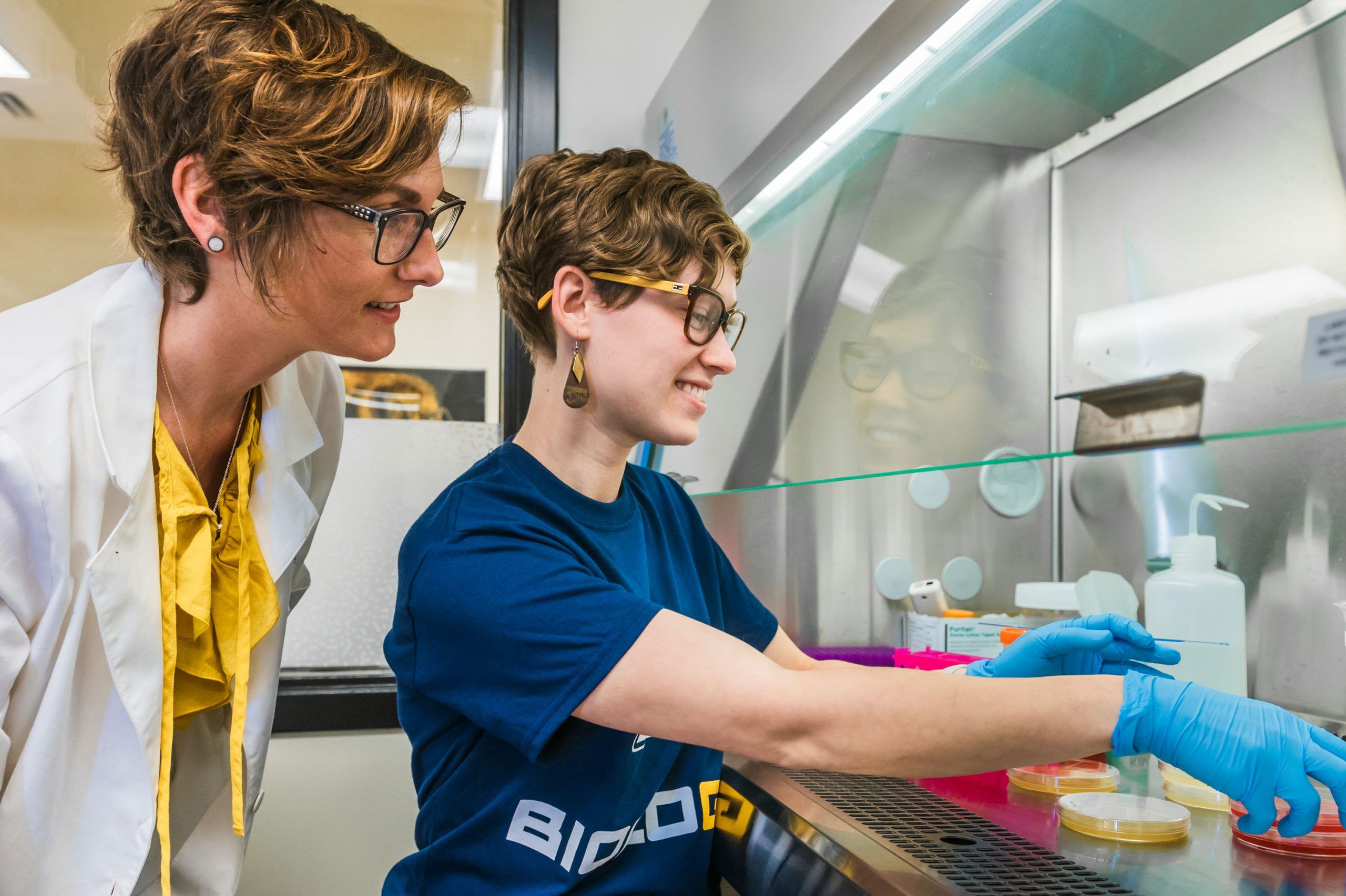Part of the Hive
Part of the Hive
Bees have a big following.
With superorganism status and a queen-based structure, they’ve captured the minds and hearts of countless scientists, artists, and hobbyists.
It’s not only bees’ behavior that fascinates humans: they are also essential to our food supply.
Across the United States, bees pollinate an estimated 130 fruits and vegetables, which amounts to a value of about $18 billion annually, according to the USDA. Within North Carolina alone, bees’ pollination of a variety of crops, from peaches to peanuts, equates to about $186 million dollars, according to the North Carolina Cooperative Extension.
But not everything is peachy with bees.
The essential organism faces serious threats, including parasites, pathogens, poor nutrition, and the mysterious colony collapse disorder. From April 2021 to April 2022 alone, the national Bee Informed Partnership estimates that over one-third of bee colonies were lost.
Researchers working out of UNCG’s Plant and Pollinator Center are part of worldwide efforts to better understand bees and help them – and the organisms that depend on them – thrive.

Some people dream about being scientists. Others aspire to be business owners. To use her findings to do good, Dr. Kaira Wagoner has decided to be both. Learn how she and UNCG alum Phoebe Snyder have turned findings about bee behavior into a product that can benefit beekeepers.
It’s not easy being a baby bee.
The hive doesn’t revolve around the developing insect. Instead, the brood – consisting of the eggs, larvae, and pupae – are part of a larger whole, whose health holds higher stock than any one individual.
Diseases and mites are the hive’s most significant threats, including the famed Varroa destructor mite. Beekeepers are losing up to 40% of their colonies every year due to these threats, says Dr. Kaira Wagoner, a research scientist at UNCG.
But some honey bees have sniffed out a curious method to reduce disease in their hives.
These specialized adults can smell when a developing bee is unhealthy and will uncap its cell, so the unhealthy brood can be inspected and, if found sick enough, removed from the hive. Scientists call the pheromone-driven process “hygienic behavior.”
“Making the sacrifice of an individual unhealthy bee improves the health of the colony,” Wagoner says. “We think of a honeybee colony as a superorganism. The focus is on the colony as a whole.”
Depending on your affinity for science, the word “microbiome” may be gibberish.
But if you have ever discussed your skin, gut, or a pesky infection – and how these commonplace topics connect to antibiotics, probiotics, or prebiotics – then you, too, are conversing about microbiomes.
The term refers to a community of tiny organisms, from fungi to bacteria, living together.
“You can have a soil microbiome, a carpet microbiome, a dish sponge microbiome – but I would say that the general public is usually going to associate the microbiome with animals,” says Dr. Kasie Raymann, assistant professor in theDepartment of Biology.
The human microbiome has piqued people’s interests, but studying it can be tricky, she says. Our diets change. Our genetics are complex. Lifestyles vary widely. These shifting factors can make it murky to design a controlled experiment.
Much of the nitty gritty remains a mystery: That’s where bees come in.
Doctoral student Megan Damico is investigating a popular but problematic beekeeping product: probiotics.
“Beekeepers, especially commercial beekeepers, are treating their hives with probiotics at large scales,” says Raymann.
They hope probiotics will combat negative impacts of antibiotic use in hives. But those hopes may be unfounded.
“Bee probiotics are regulated like food – the product ingredients have to be safe,” says Damico. “But they’re not regulated in the sense that their claims have to be true.”
As part of her dissertation research, Damico is partnering with NC master beekeeper Burton Beasley. Their early findings match their expectations and previous studies in the area: After hives are treated with antibiotics, adding commercial probiotics that are currently available does not significantly replenish honey bee microbiomes.
Damico and Raymann caution that science is always evolving – a future probiotic could strike the scientific sweet spot and help bees. But in the meantime, they point out, probiotics on the market are expensive and seem to be a waste of both time and money.


